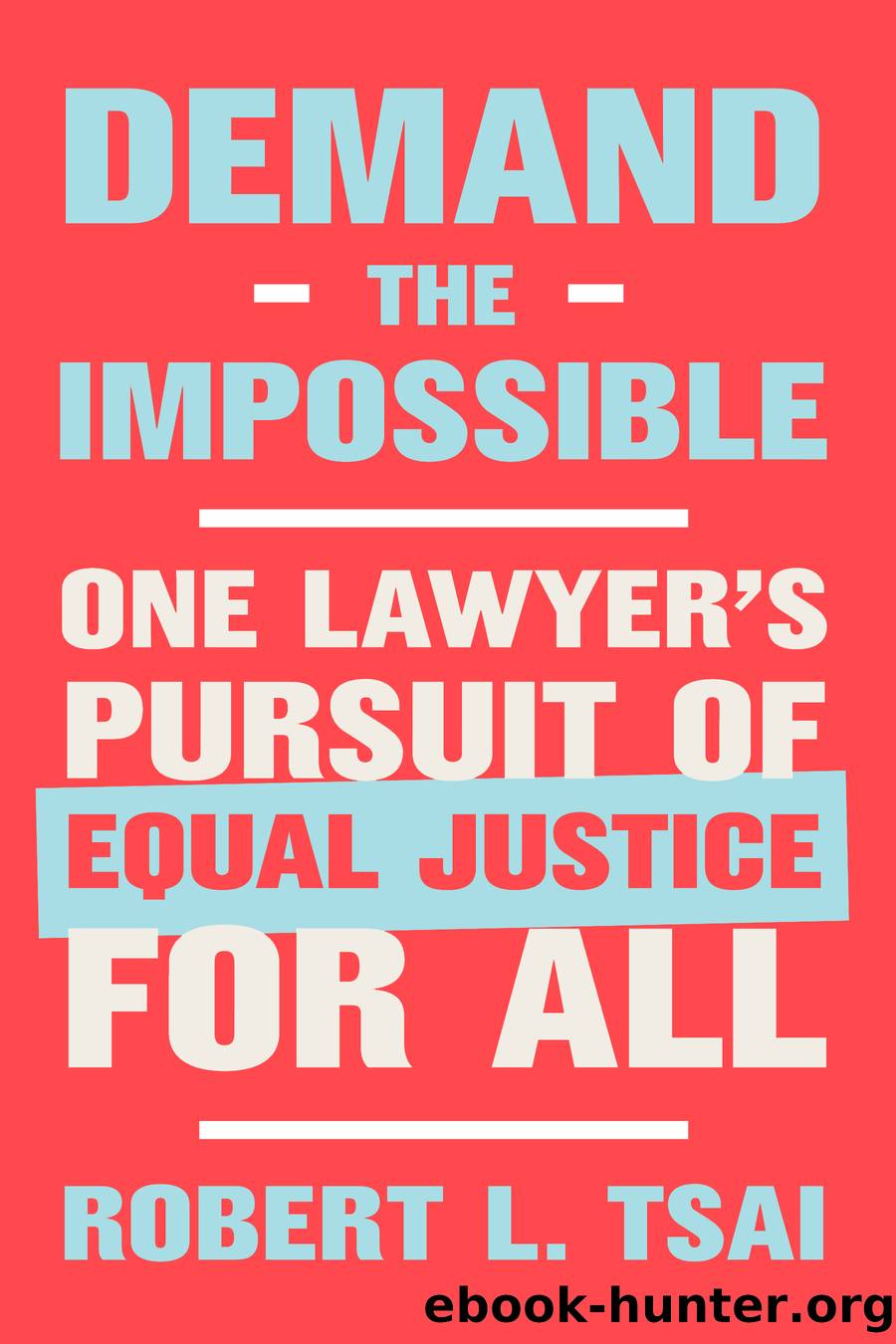Demand the Impossible by Robert L. Tsai

Author:Robert L. Tsai
Language: eng
Format: epub
Publisher: W. W. Norton & Company
Published: 2024-03-15T00:00:00+00:00
Foster v. Chatman
Bright was wrapping up a final moot court session on a late Friday afternoon in Washington, D.C., in October 2015, preparing to argue his third capital case in front of the U.S. Supreme Court. Out of the blue, the Clerk of Court sent a letter to all counsel informing them that they âshould expect questions at oral argument on whether certiorari in this case should be directed to the Supreme Court of Georgia or the Superior Court of Butts County, Georgia, and what significance, if any, that determination may have on the Courtâs resolution of the case.â Because oral argument in the appeal had been scheduled for first thing Monday morning, this last-Âminute communication set off a frenzy of activity. The justicesâ odd message raised the possibility they might try to dispose of the appeal without getting to the merits of a tough constitutional issue for which Bright was demanding an answer.17
His client, Timothy Foster, a Black man, had been sentenced to death by an all-ÂWhite jury in 1986 for sexually assaulting and killing a White teacher during a burglary. He was eighteen at the time and confessed to the crime. As in Snyder v. Louisiana, the issue involved whether the state violated the Equal Protection Clause by removing Black citizens from the jury pool. During jury selection in Floyd County, one African American was excused for cause because a friend was related to Foster. Prosecutors Doug Pullen and Steve Lanier subsequently used their peremptory strikes to remove all four remaining Black jurors.
During sentencing, Fosterâs lawyers asked jurors to consider his youth and intellectual disability as mitigating factors, as he had tested between 58 and 80 on IQ tests. His girlfriend, who incriminated him, had been in possession of some of the victimâs belongingsâÂFosterâs lawyers suggested that she or others may have been involved in the crime. Foster had a troubled background. His parents introduced him to drugs as a child. Fosterâs own father refused to cooperate when lawyers reached out to him for help to save his sonâs life. âI could always make another child,â he shrugged.
During closing argument before the all-ÂWhite jury on the question of appropriate punishment, District Attorney Lanier did the unthinkable: he openly appealed to Fosterâs race and poverty, urging the jury to impose the death sentence âto deter other people out there in the projects.â
Foster had been tried shortly after the Court decided Batson and reflected troubling questions about how the legal rule would be enforced. Under the rules established by that decision, a defense objection that a juror had been excluded because of race forced the state to give a neutral explanation. Batson then required the trial judge to make a finding about the prosecutorâs true reason for removing that juror. During Fosterâs trial, prosecutors responded to the new requirement to justify a peremptory strike when challenged by throwing the âkitchen sinkâ at the trial judge and daring him to find a problem. When challenged, prosecutors gave between eight and twelve separate reasons for excluding the Black jurors.
Download
This site does not store any files on its server. We only index and link to content provided by other sites. Please contact the content providers to delete copyright contents if any and email us, we'll remove relevant links or contents immediately.
The Borden Murders by Sarah Miller(3592)
The Secret Barrister by The Secret Barrister(3010)
Coroner's Journal by Louis Cataldie(2104)
Police Exams Prep 2018-2019 by Kaplan Test Prep(2037)
The Splendid and the Vile by Erik Larson(1789)
Terrorist Cop by Mordecai Dzikansky & ROBERT SLATER(1719)
My Dark Places by James Ellroy(1506)
A Colony in a Nation by Chris Hayes(1503)
Black Klansman by Ron Stallworth(1447)
A Life of Crime by Harry Ognall(1381)
Objection! by Nancy Grace(1331)
Whoever Fights Monsters by Robert K. Ressler(1322)
The New Jim Crow by Michelle Alexander(1317)
American Prison by Shane Bauer(1290)
Obsession (The Volkov Mafia Series Book 1) by S.E Foster(1279)
Anatomy of Injustice by Raymond Bonner(1268)
The Art of Flight by unknow(1265)
A Higher Loyalty by Comey James(1241)
A is for Arsenic: The Poisons of Agatha Christie (Bloomsbury Sigma) by Kathryn Harkup(1216)
